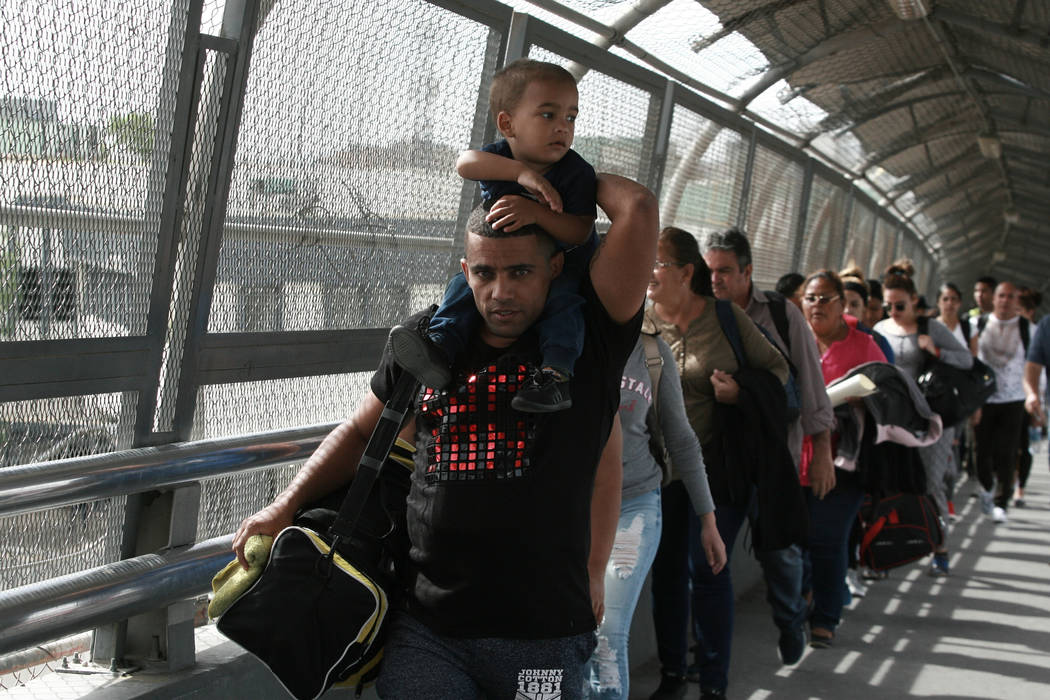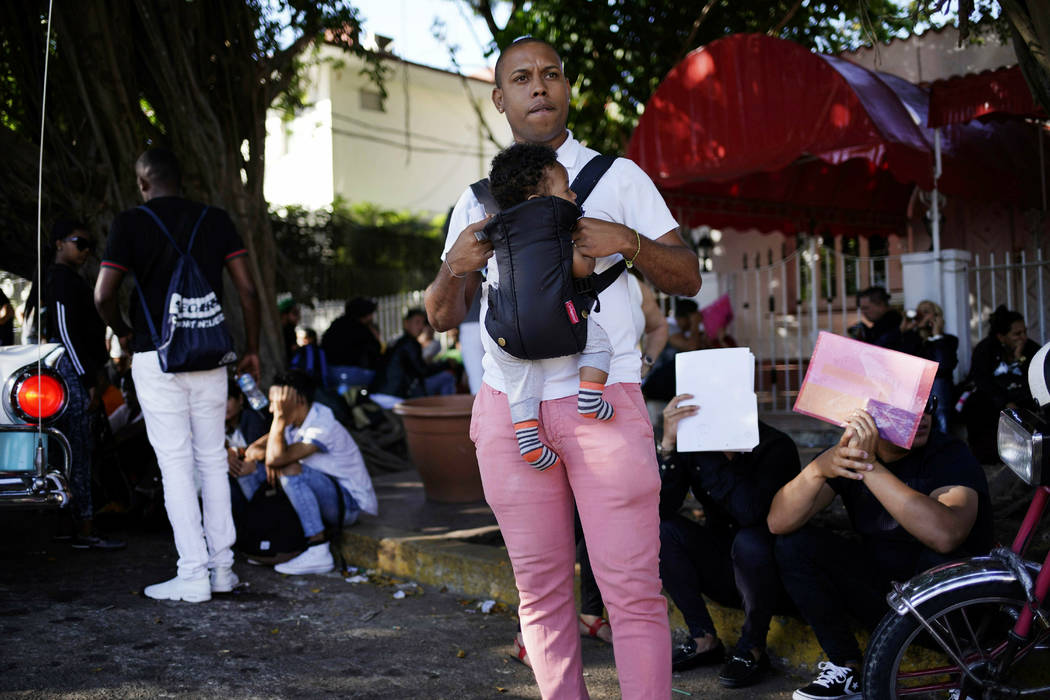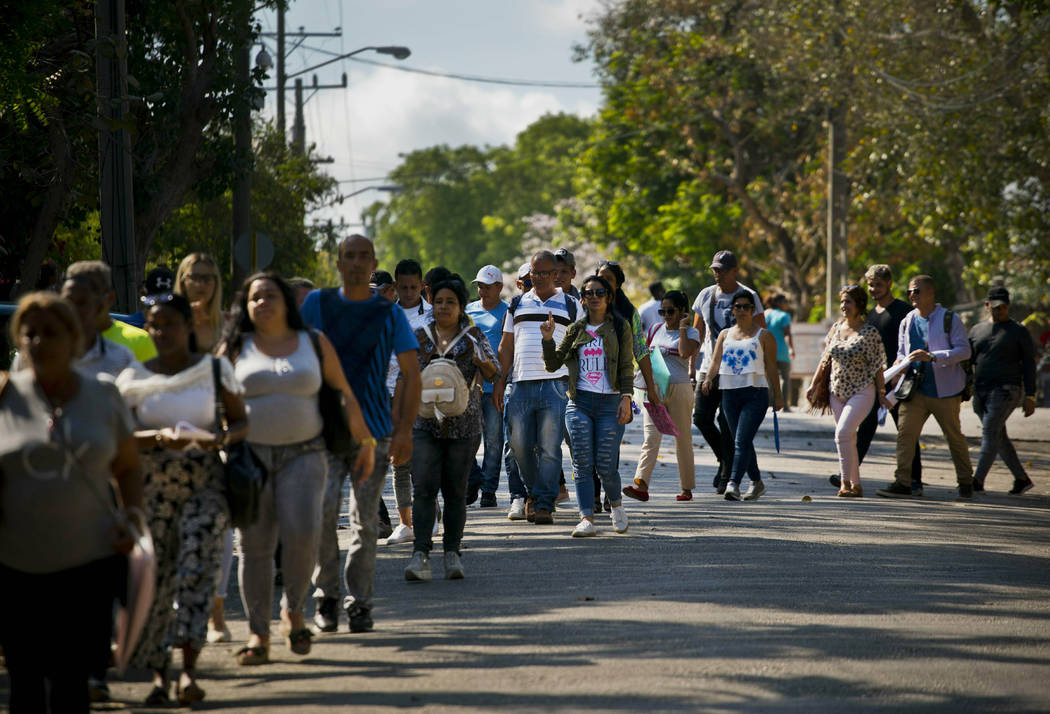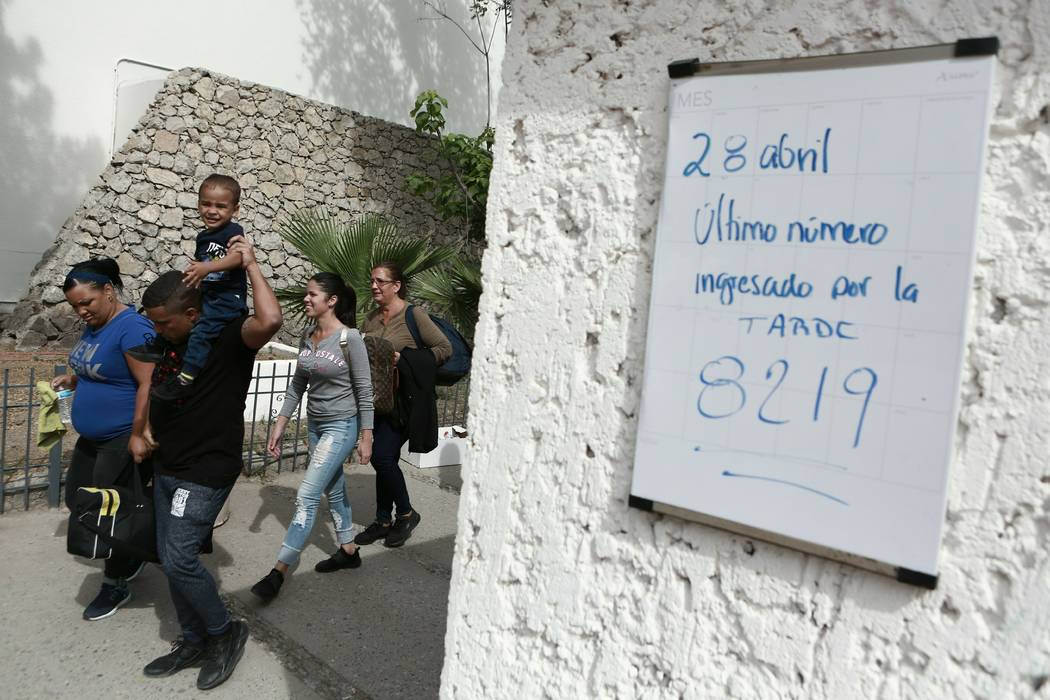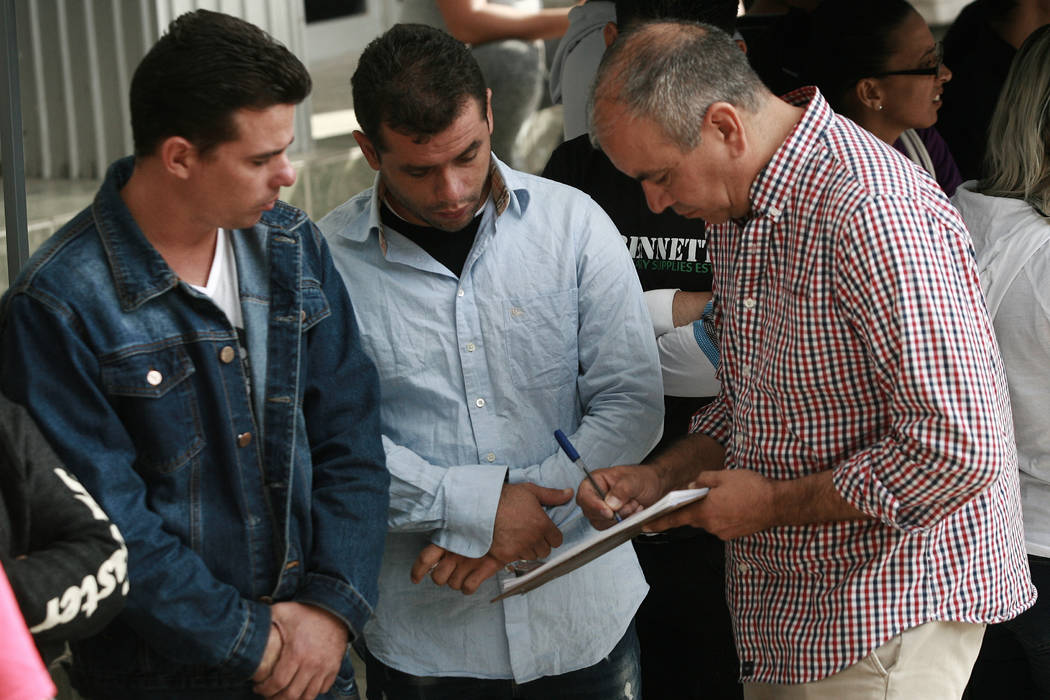Cubans plug shrinking ‘bottleneck’ trying to enter US via Mexico
CIUDAD JUAREZ, Mexico — Burgeoning numbers of Cubans are trying to get into the U.S. by way of the Mexican border, creating a big backlog of people waiting on the Mexican side for months for their chance to apply for asylum.
The surge over the past several months has been propelled in part by loosened traveled restrictions in Central America and deteriorating living conditions in Cuba.
As a result, about 4,500 people, the vast majority of them Cuban, are crowded into Ciudad Juarez, across from El Paso, Texas, while they wait to be called for their asylum interviews — an influx that has raised tensions with the locals in some cases.
“It’s a bottleneck with an opening that is getting smaller,” said Enrique Valenzuela, an official of Mexico’s Chihuahua state, which manages Juarez’s waiting list. “People keep coming.”
For decades during the Cold War and beyond, Cubans tried to reach the U.S. by air, land and sea, many of them crossing the 90 miles to Florida in dangerously rickety boats and rafts.
In January 2017, though, the U.S. ended its “wet-foot, dry-foot” policy of almost automatically admitting any Cuban who managed to reach American soil. For many Cubans, their best option is going to the U.S.-Mexican border and claiming asylum.
New route from Cuba
For many years, Cubans entering through the southern border generally flew to South America and tried to come into the U.S. at Laredo, Texas. But now many are using a relatively new and shorter route: They fly to Panama or Nicaragua, pay smugglers to help them reach the U.S. border, and seek to come across at El Paso.
In the seven-month period from October through April, 4,737 Cubans without legal status entered the U.S. at crossings in Customs and Border Protection’s El Paso field office, compared with 394 in the previous 12 months. Along the entire U.S.-Mexico border, 10,910 Cubans came through official crossings between October and April, versus 7,079 in the previous 12 months.
Migrants applying for asylum are often released into the U.S. while their cases make their way through immigration courts, which can take years. But for Cubans, it’s easier to settle in the United States than for others.
Communist Cuba refuses to fully cooperate with the U.S. on deportations, meaning that if the migrants lose their asylum cases, Cuba generally doesn’t take them back. The U.S. then has little choice but to let them stay.
For Cubans and others, one of the biggest obstacles is simply getting an opportunity to apply for asylum. Over the last year, the Trump administration has sharply limited the number of asylum claims it processes at land crossings, forcing people to wait their turn in Mexico.
5-month delay at Juarez
At the current processing rate, the wait in Juarez is now up to five months, compared with only a few days as recently as February.
Panama became known in recent years as a relatively easy source of visas for Cubans who could make a convincing case that they only wanted to shop and return to sell goods in Cuba. Panama has a free trade zone where Cubans splurge on everything from shampoo to air conditioners and electric motorbikes.
Also, in October, Panama began issuing $20 tourist cards to Cuban business people and certain others, replacing a longer, more difficult process that often ended in rejection.
In January, Nicaragua made it faster and easier for Cubans to obtain a visa in Havana by eliminating the requirement that applications be approved in Nicaragua’s capital.
Meanwhile, a drop in Venezuelan aid and the U.S. hardening of the trade embargo against Cuba have created food shortages and a sense of crisis on the island. Young people in particular are lining up outside any embassy that will grant them a visa.
Friends told Yaneisi Hernandez of Havana that Juarez was safer than other Texas crossings, that it had a strong network of charitable groups and, most important, that the wait to claim asylum in the U.S. was comparatively short. After flying to Nicaragua and paying a smuggler to reach the U.S. border by bus, taxi, on foot and on horseback, she was disappointed to find 3,500 names ahead of hers.
“I can’t even think about working here because I might get deported,” said Hernandez, 39, after spending her first night in Juarez sleeping with other Cubans on a patch of grass outside the government office where asylum seekers are assigned numbers while they wait.
$2-4K for smugglers
Cubans arriving in Juarez last month said they paid smugglers about $2,000 to reach the U.S. border, plus $150 to $400 in the southern Mexico border city of Tapachula for a lawyer to obtain a court order allowing them to travel legally through Mexico. They waited about three weeks in Tapachula for legal permission to stay in Mexico.
The surge of Cubans has been so big that Juarez restaurants have added Cuban favorites like roast suckling pig and black beans with rice to their menus.
Unlike Central Americans, many of whom are fleeing are extreme poverty and arrive with little more than the shirts on their backs, many Cubans can afford a cheap hotel or rented room if migrant shelters don’t have space, aided by relatives in the U.S. They buy cellphones for their short time in Mexico, which they use to check a Facebook group that gives twice-daily updates on the waiting list. Cuban men can be distinguished by their spotless sneakers, track suits and aviator sunglasses.
Some Juarez residents are wary.
Casa del Migrante, which houses up to 1,000 people in its shelter, banned Cubans earlier this year because they didn’t mix well with Central Americans and didn’t follow the rules, said manager Blanca Rivera.
“They didn’t like our food,” she said. “You have to make exceptions for them. They want rice, meat sandwiches, they want pizza. … That attitude is not welcome in migrant shelters.”
Some Cubans are also souring on Juarez.
About 10 Cubans pursuing asylum gathered near a phone charging bank one Friday night at the El Paso airport to wait for a 6 a.m. flight to Miami. After flying to Panama and reaching Juarez in early February, Arnoldo Garcia, a Havana electrician, said he waited only two days to claim asylum in El Paso.
After about two months in U.S. detention, Garcia, 47, was released with an appointment slip for immigration officials in Miami. He said he wouldn’t recommend Juarez to anyone contemplating the journey.
“There are too many people,” he said. “It’s become a lot more complicated.”
———
Weissenstein reported from Havana, Cuba.



